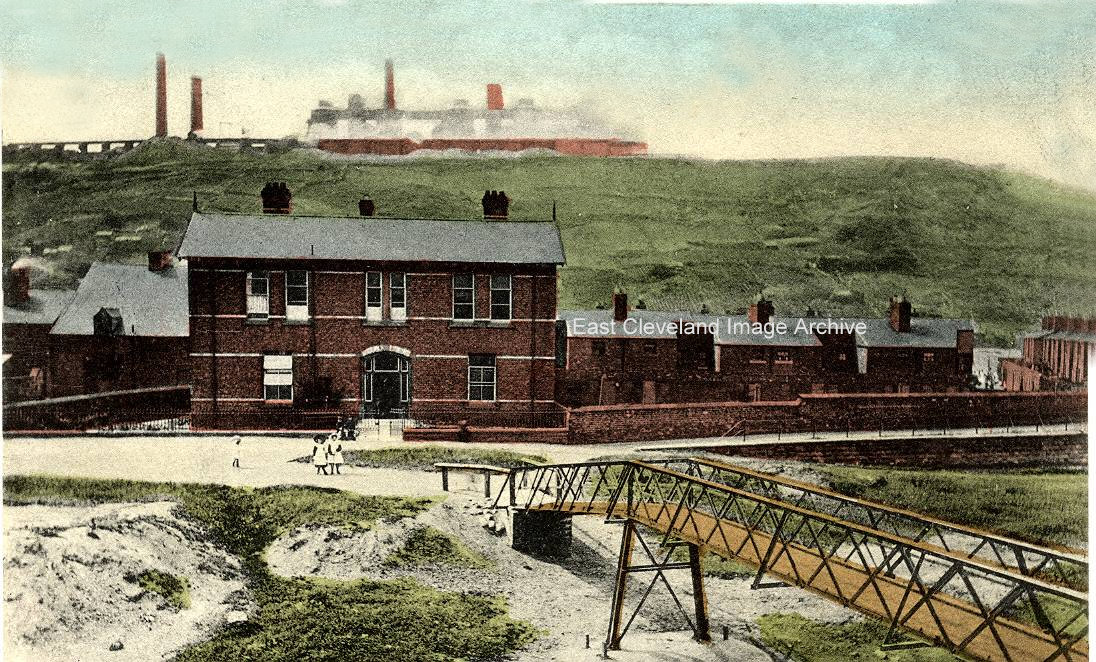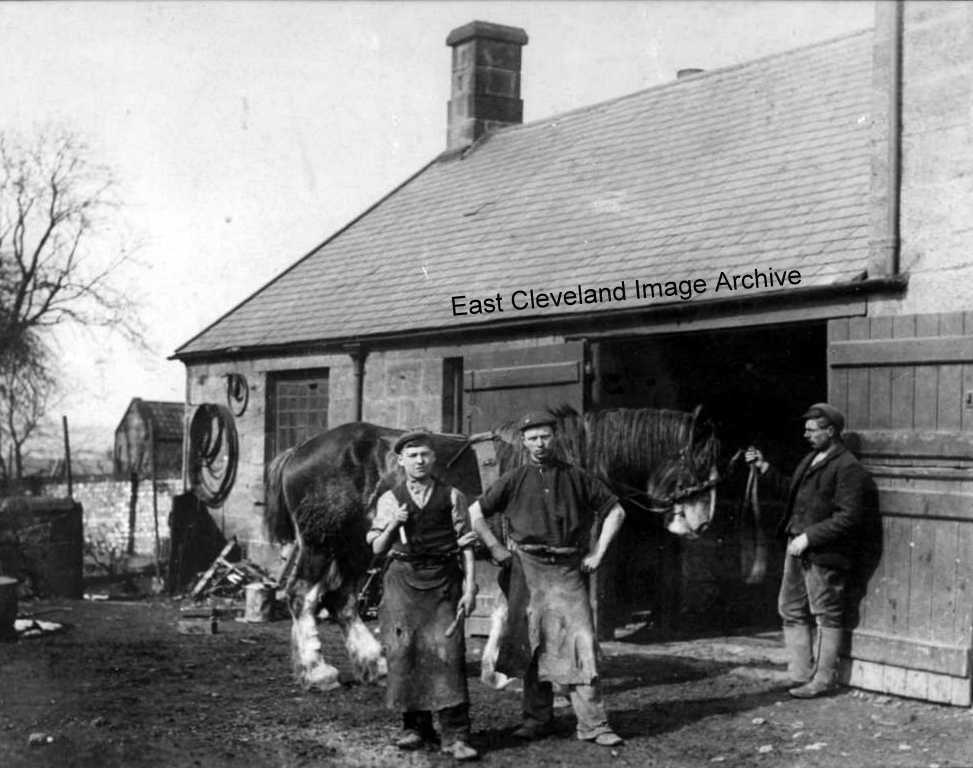
A hand-tinted photo of the hospital and the second bridge as the caption says, the works can be clearly seen on the hill in the background.
|
|
||
|
A hand-tinted photo of the hospital and the second bridge as the caption says, the works can be clearly seen on the hill in the background.
We thought this was Skinningrove, but now are reliably informed it is North Ormesby! We have also been reliably informed that the wards at Skinningrove would have a similar layout and positioning of beds, as well as heating arrangements! A poor image but you can see the nurses standing by the beds of the patients. Ann Jackson suggested: “It could be one of the medical wards. The wards were much the same layout in the late 1960’s when I started my training. They were more modern with central heating and the fire places had gone.” Rod Clarkson has confirmation with: “definitely St Michael’s or St Luke’s Wards at North Ormesby Hhospital (depending if was ground floor or 1st floor). The layout was much the same in late 1970’s when I trained there.” Many thnaks to Ann Jackson and Rod Clarkson for those updates.
A good picture of the hospital built by the mine owners, the jetty in the background and the old bridge on the right. Image courtesy of Alan Richardson.
A beautiful quiet lane (and I wish I had a £1 for every time I had walked it) beautiful views all round but as usual the iron and steel works dominate the skyline.
A triumphant return to Loftus for Mr Samuel the winner of the by-election, the post office is easily picked out, with the chemist next door. Interestingly with an electorate of 12,360 Mr Samuel won the seat casting 5,834 votes with his opponent Geoffrey Drage casting 3,798, giving a turn-out of some 70+%; how different to today?
The caption on the photograph says it all, Cleveland by-election Mr Samuel in Loftus Tuesday July 6th, 1902. Outside what used to be the National Provincial Bank later the Nation Westminster Bank (NatWest). The by-election followed the resignation of the standing Liberal MP, Alfred Edward Pease on the grounds of ill-health. Pease had previously been the MP for York from 1885 until 1892; Despite this plea of poor health, Pease actually lived for another 37 years and spent much of the rest of his life in British East Africa (known as Kenya from 1920), hunting game and entertaining travellers who came for the safaris.
A lovely clear shot of the hospital, the jetty in the background and all the allotments on the hillside; the image is from a Smelt postcard. As yet the Archive has not sourced a clearer image, perhaps a viewer of the site can assist? Image courtesy of the Pem Holliday Collection, Cleveland ironstone Mining Museum and others.
Originally we posted this image in poor black and white format; but realised it was from a postcard (based on the number – upper right corner) and there must be a better quality image somewhere. Recently whilst undertaking a scan of another collection game upon the above image and so have replaced. Image courtesy of Julie Tyrka and Eric Johnson.  Believed to be Harry Wrightson blacksmith at Loftus Forge in 1900, with John Ward Hopper (who was apprenticed to Harry Wrightson) on the left. John Ward Hopper was the Grandfather of Maurice Toulson of the Loftus Town Crier. Loftus Forge was built by Lord Zetland at the turn of the century, in what was then his timber yard, with his estate office nearby. The forge was rented to Mr John Wrightson for £15 per year. John Smith advised us: “I’d question this as Harry wasn’t born until 1901 in Guisborough (unless there is another Harry). It might be his Father, John or the date may be incorrect? Harry was my Grandmother’s cousin and I remember going to stay at the forge in the 1960’s.” The gentleman holding the horse is unknown. Can you help? Image courtesy of Olive Bennett and thanks to John Smith and Mary Thewlis for the updates.
This photograph was loaned to us by Geoff Hore and the title was written on the back has anyone any information on why it was called or who were the Skinningrove Hospital Fathers? But as Tony Nicholson has pointed out to us:”Two of the men seem to be patients (the man on the front right with crutches, and the man on the back left with an injured arm). It’s possible that the three individuals sat on the bench were patients too? The lad looks young, but could easily have been working in the mine.” As Tony says the young man is not old enough to be a ”father”. The mystery deepens. Tony also tells us: ”I think the nurse on the left is the Matron of the Hospital, Emily Elgey. She came to the hospital in 1902 and died in 1924. The nurse on the right looks like her probationer nurse, Liebe Mary Bowen, who was there around 1910/11. I have photos of Liebe from much later in life (c. 1930s and 1940s) which seem to show a similar face, although all of us change as we age.” Rebecca Saywell tells us: ”The man sat at the front on the left, is my great great grandfather, James Abbott. He was born in 1855 and died in 1914. Geoff (who supplied the photo) is the son of my nan’s cousin.” Please note this revised image, the original had been distorted in scanning – many thanks to Tony Nicholson – whom following his request to contact Geoff whilst following researches into the Miner’s Hospital at Skinningrove obtained an improved image. Image courtesy of Geoff Hore and thanks to Tony Nicholson for the advice; also Rebecca Saywell for the update. |
||
Recent Comments